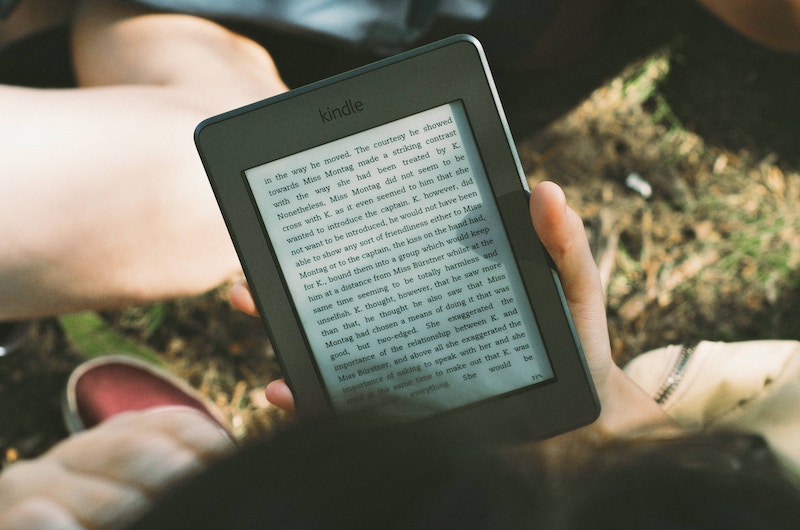To succeed and move to greater heights, you can’t stop learning, you can’t stop reading. But reading can get boring so you take the easy way out and abandon it altogether.
What if I told you there are ways to do it faster than the ordinary reader. The stats for reading speed are at 200wpm (words per minute).
But you can be faster than that and get done with those personal finance and self-help books on your shelf. Here are a few tips:
1. Go For An Eye Examination
To succeed with a lot of the tactics in this post, you need to have eyes with a wide span so you can look at both edges of a particular page at a glance.
So when last did you see the ophthalmologist or the optometrist?
There are many conditions that can interfere with your reading speed, amblyopia or lazy eye is one of them. In this condition, the images produced by your eyes are blurry.
That’s because there’s a bit of miscommunication between the eye and the brain so the brain coordinates one eye and leaves the other.
Another condition is presbyopia where your eyes lose the ability to focus on nearby objects, it’s common in the elderly and can be corrected with prescription lenses.
Myopia and Hypermetropia are other conditions you want to check for. Bottom line: If your body’s physiology isn’t at its normal state, it’ll disturb your attempt at speed reading so go get your eyes checked.
2. Choose The Perfect Environment
At increased temperatures, your metabolic rate increases and lots of biochemical processes start running in your body and your focus takes a huge hit.
Lower temperatures denote calmness and it’s actually a way of informing your brain to get itself together and concentrate on the text you’re reading. So get yourself a cool location before you start.
Try to get yourself a quiet area to do your reading and if you don’t find one, earplugs would come in handy. Our brains wander a lot, looking for any little piece of distraction to amplify, so don’t read in busy areas, your room or office should be perfect for this.
And still on the environment, try to read in brightly illuminated areas, anything close to natural light is fine.
But don’t read in the dark, reading in the dark puts your eyes in a bad position, the ciliary muscles responsible for accommodation will be overworked causing a strain in your eyes.
If that still doesn’t send the message that you should stop, a headache is next on the line and you don’t want that.
3. Listen To The Right Music
…If you can. You see, while it’s good to get a quiet location to do your reading, some of us don’t like graveyard-style silence.
So if that’s you, and you like a little noise, and that noise is music, go for something calm. This isn’t time to go for songs with fast-paced beats.
Why music may work for you is because it keeps you relaxed, putting you in the right frame to start digesting the meat in all that content.
4. Get The Right Posture
There’s a reason we can hardly read informative materials on our beds. That’s because we sleep on it every day, so our brain has linked lying down with rest and sleep.
The moment you get up and move to your work or reading table, that configuration changes, so your body is prepared to do work.
So sit up straight, you don’t want any back pains after reading so your spine should rest against your chair. This posture also facilitates proper blood flow to all the parts of your body.
5. Hold Your Book Upright
Your eyes should be directly on the page, not from the side with your neck positioned at an angle. Holding your book upright allows you move from side to side with ease.
If you’re reading on a Kindle or a tablet, maintain the same position, don’t place your device on the table as it affects your reading posture.
When you’re doing a lot of regular reading, you’ll get tired holding your book upright all through a particular session so invest in a stand or a platform that can keep your book or device in place while you read along.
6. Eliminate Other Distractions
Snacks, drinks and other beverages should be nowhere near your reading table. The thing is, you get a lot done when you’re focused on a particular task, divide that focus by putting things like snacks on the table and your salivary glands would push you in the wrong way.
Do this instead, if you know you can’t put in an hour of reading before reaching for a drink, commit to just thirty minutes of reading and five-minute recreation time. So don’t try to force it, know your threshold and stick to it.
You can spend two hours without achieving anything ‘cause your mind isn’t in one place but can achieve more with just a 25-minute focus.
7. Skip
There’s a reason why many popular academic textbooks have review copies. That’s because there’s a lot of fluff in the complete copy.
You can do the same thing with those books you’re trying to finish up, look at the table of contents, check for topics where the ambiguous language is used, look at the introductory paragraph, the author would normally summarise the gist of the subject in a topic sentence.
Skim through the first, middle and last lines of the paragraph and you’ll get it. If there’s a highlighted quotation in a particular topic, that would normally be the main idea also.
Once you’ve gotten the main gist you can then decide if it’s something you want to go deeper into or if the supporting lines are just mindless repetitions.
8. Don’t Subvocalize
Don’t read out loud while you’re reading.
This is a very common speed killer. Many people do this because they try to see how the different phrases connect with each other but you don’t need to do this, good books will provide more than one sentence of explanation to make a word or idea clearer.
9. Look For The Most Important Information
When you’re reading a text, look at the subheads, look at the paragraphs that use bullet points, look at emboldened and italicized text and look at the summary boxes.
These are the parts of the text with the most important information, get them and you can say you’ve gotten as much as you need from a particular topic.


